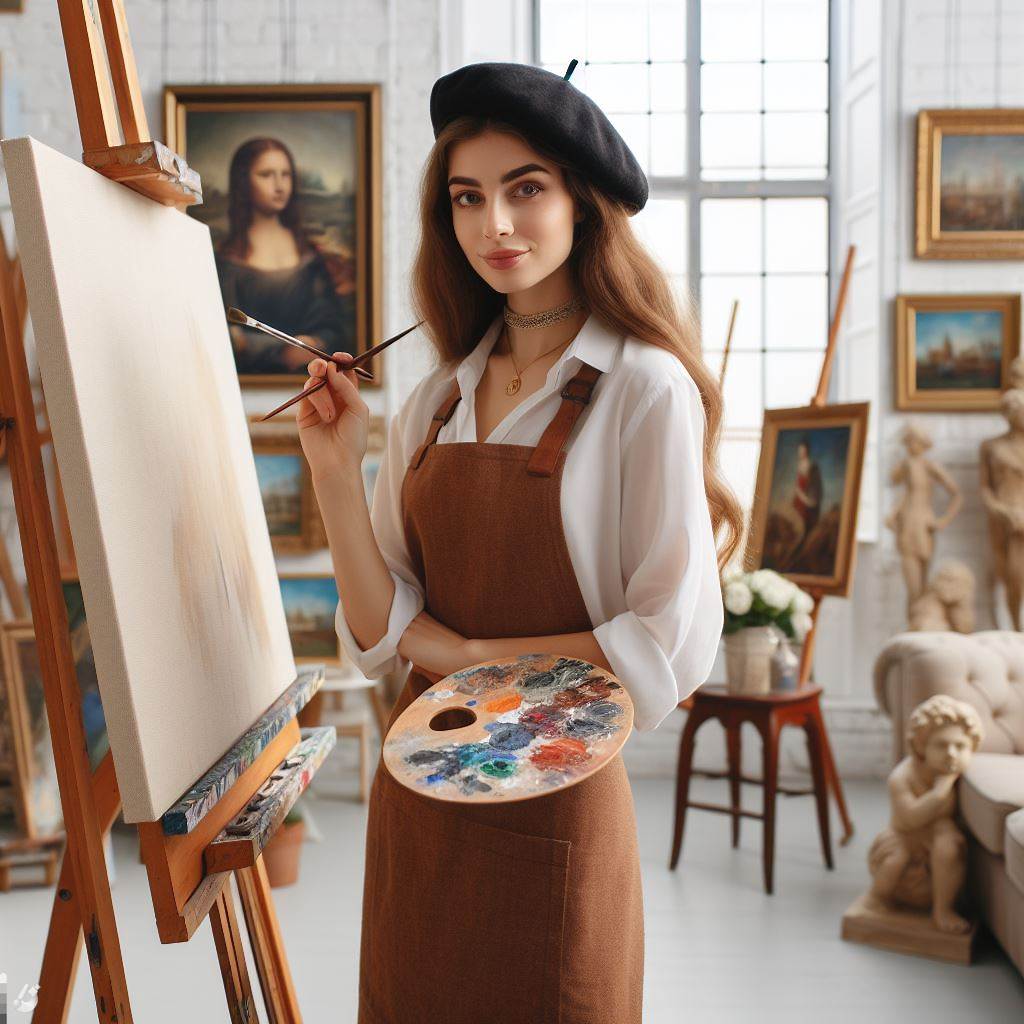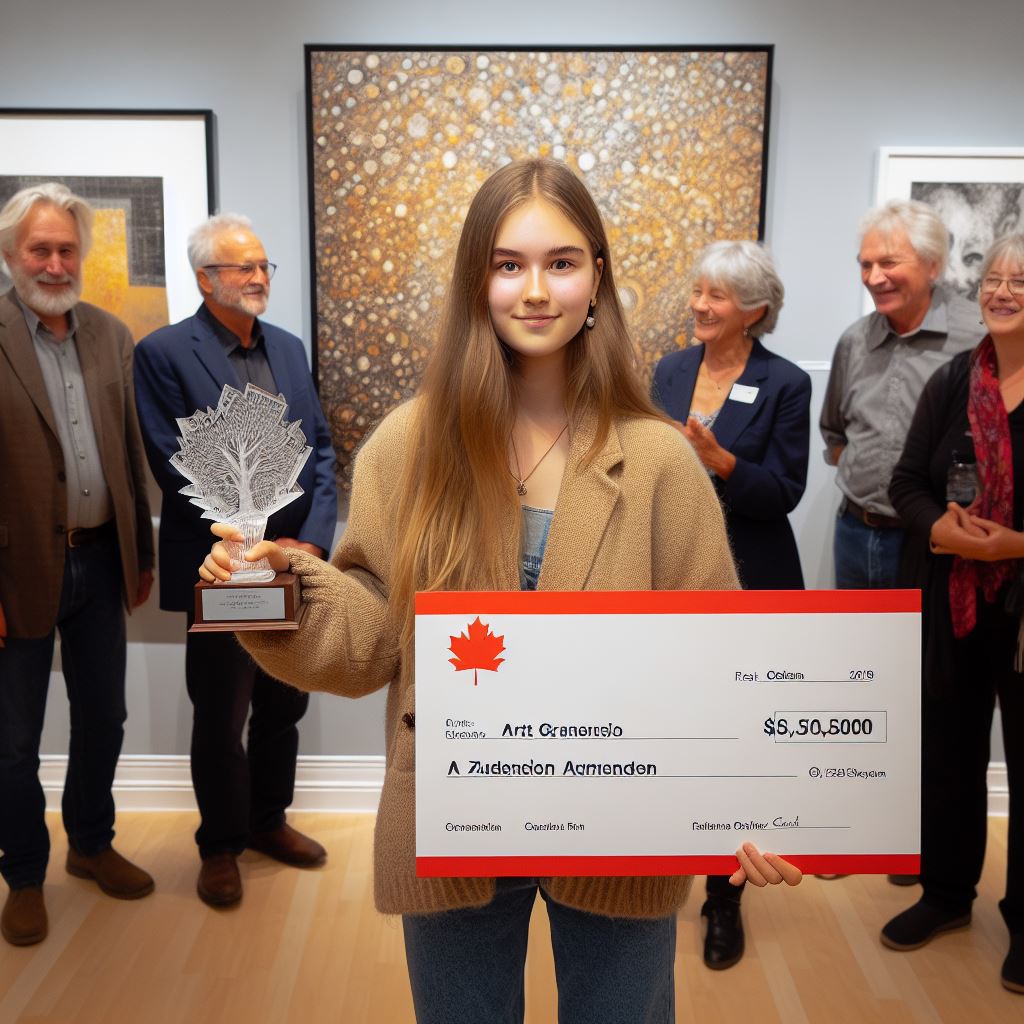Introduction
Brief overview of the Canadian art scene
The Canadian art scene is a vibrant and diverse community that encompasses various artistic disciplines and expressions.
From traditional painting and sculpture to digital art and performance, Canada has a rich artistic heritage that continues to evolve.
Importance of staying updated on emerging art trends
Staying updated on emerging art trends is crucial for artists looking to challenge their creative boundaries and stay relevant in the ever-changing art landscape.
By keeping an eye on the latest trends, artists can experiment with new techniques, materials, and concepts, pushing the boundaries of their practice and captivating audiences with fresh and innovative artwork.
For art enthusiasts, staying updated on emerging art trends allows for a deeper appreciation and understanding of contemporary art.
It provides an opportunity to engage with new artistic voices, explore different perspectives, and broaden one’s artistic horizons.
Discovering emerging artists and movements can be an exciting journey of exploration and discovery.
Collectors also find it essential to stay updated on emerging art trends.
By identifying and acquiring artwork from promising emerging artists, collectors can not only support the growth of the art scene but also make valuable investments.
Often, artwork by emerging artists can appreciate in value significantly, providing collectors with a unique opportunity to capitalize on the talent of up-and-coming artists.
Basically, the Canadian art scene is a vibrant and ever-evolving landscape.
Staying updated on emerging art trends is essential for artists, art enthusiasts, and collectors, enabling them to stay at the forefront of the artistic conversation, support emerging talent, and enrich their own artistic experiences.
Technologically-driven Art
How technology is influencing art
Technology has deeply influenced the art world, revolutionizing traditional methods of creation and presentation.
Artists now have access to various tools and mediums that enable them to explore new possibilities.
This convergence of art and technology has opened up a whole new realm of creative expression.
Examples of technological art forms
- Digital Art: With advancements in software and hardware, artists are able to create stunning digital artworks that blur the line between digital and traditional art forms.
- Virtual Reality (VR): VR technology allows artists to immerse viewers in virtual environments, providing a unique and immersive experience. Artists can create virtual worlds and narratives that engage multiple senses, transcending the limitations of traditional art forms.
- Interactive Installations: Artists are now incorporating interactive elements into their installations, creating engaging and participatory experiences for viewers. These installations often involve the use of sensors, motion detection, and other technologies to respond to the audience’s presence or actions.
Impact of technology on the Canadian art landscape
The integration of technology in Canadian art has had a profound impact on the art landscape.
It has broken traditional boundaries, allowing artists to reach wider audiences and explore innovative forms of expression.
Technology has facilitated collaborations among artists, resulting in dynamic partnerships and the creation of interdisciplinary artworks.
Moreover, technology has democratized art creation and consumption.
Artists can now easily share their work online and reach global audiences, transcending physical barriers.
This increased accessibility has led to a more diverse and inclusive art scene in Canada.
Possible future developments in technologically-driven art
Looking ahead, technologically-driven art is expected to continue evolving and pushing boundaries.
One emerging development is the fusion of artificial intelligence (AI) and art, where AI algorithms are used to create artworks or assist artists in their creative process.
This symbiotic relationship between humans and machines opens up endless possibilities for innovative and thought-provoking art forms.
Additionally, advancements in virtual and augmented reality are expected to revolutionize the way art is experienced.
Unlock Your Career Potential
Visualize a clear path to success with our tailored Career Consulting service. Personalized insights in just 1-3 days.
Get StartedArtists may create entire virtual galleries or even collaborate on immersive exhibitions that transport viewers to different realities, offering unparalleled interactive experiences.
As technology continues to advance at a rapid pace, artists will have access to even more sophisticated tools and mediums.
This will further blur the lines between traditional and technologically-driven art, challenging artists to push their creative boundaries and redefine what is possible in the world of art.
Generally, technology has become an integral part of the Canadian art landscape, revolutionizing the way artists create and audiences experience art.
From digital art to virtual reality and interactive installations, technology offers unparalleled opportunities for creative expression.
As new forms of technology emerge, artists will continue to push boundaries and explore new frontiers in the ever-evolving world of art.
Read: Indigenous Art in Canada: Voices and Visions
Indigenous Art and Representation
Recognition of Indigenous art as a significant emerging trend
Indigenous art is flourishing in Canada, with a resurgence of traditional practices and contemporary adaptations.
It has become evident that Indigenous art not only holds immense cultural significance but also boasts unique artistic expressions that captivate audiences worldwide.
This trend of Indigenous art has gained prominence on both national and international scales, transforming the Canadian art scene.
Increase in Indigenous artists gaining recognition and exposure
The increase in recognition and exposure of Indigenous artists has been a driving force behind this emerging trend.
Indigenous artists are being celebrated for their contributions to the arts, and their work is being showcased in museums, galleries, and other prestigious art venues.
This newfound recognition is a testament to the exceptional artistic talent within Indigenous communities.
Efforts to address historical marginalization in the Canadian art industry
However, this recognition does not come without addressing the historical marginalization that Indigenous artists have faced in the Canadian art industry.
For centuries, Indigenous art was often relegated to the sidelines, devalued, or appropriated without proper acknowledgement.
The art world is now actively working towards rectifying these past injustices.
Efforts are being made to ensure that Indigenous artists are fairly represented and have equal opportunities for success.
Art institutions, galleries, and art collectors are investing in showcasing and promoting Indigenous art.
They are establishing dedicated spaces for Indigenous art, hosting exhibitions, and collaborating with Indigenous artists to bring their work to a broader audience.
These initiatives aim to amplify Indigenous voices and narratives in the art world.
Importance of Indigenous art and cultural representation
The importance of Indigenous art and cultural representation cannot be overstated.
Indigenous art not only serves as a powerful means of self-expression but also plays a vital role in preserving rich cultural heritage.
Indigenous artists draw inspiration from their communities, histories, and connections to the land, creating artwork that embodies their unique cultural identity.
By showcasing Indigenous art, cultural representation is amplified, challenging the existing narratives and exposing audiences to diverse perspectives.
It allows for a more comprehensive understanding of the Indigenous experience and fosters a deep appreciation for their contributions to the arts.
Essentially, Indigenous art has emerged as a significant trend in the Canadian art scene.
The increased recognition and exposure of Indigenous artists signify a shift towards a more inclusive and diverse art industry.
Efforts to address historical marginalization are crucial in ensuring the fair representation and success of Indigenous artists.
The importance of Indigenous art and cultural representation should be celebrated and supported to foster a more inclusive and enriched arts community in Canada.
Read: Balancing Art and Business: Tips for Canadian Artists
Sustainable Art Practices
Growing emphasis on environmental consciousness in the art world
The art world is undergoing a significant shift towards environmental consciousness, with artists recognizing and addressing the need for sustainable practices.
This trend is not only evident in Canada but also globally, as artists aim to highlight the urgency of environmental issues through their work.
How Canadian artists are integrating sustainability into their work
Canadian artists, in particular, have embraced the challenge of integrating sustainability into their artistic practices.
They have started incorporating eco-friendly methods and materials into their artworks to reduce environmental impact.
This integration represents a sincere commitment to preserving the environment through art.
Examples of sustainable art practices
Many Canadian artists are creating masterpieces using recycled or repurposed materials.
By transforming discarded objects into art, these artists challenge our preconceptions about waste and consumption, encouraging us to reimagine the potential of discarded materials.
Additionally, they frequently incorporate eco-friendly messages into their artwork, inspiring viewers to adopt a more sustainable lifestyle.
Impact of sustainable art on the art market and audience engagement
This growing emphasis on sustainable art practices is not only making waves in the art world but is also influencing the art market.
Collectors are increasingly drawn to artwork that reflects their environmental values, creating a demand for sustainable pieces.
This shift in demand has prompted galleries and art institutions to actively support and promote sustainable artists, thereby fostering greater audience engagement.
Furthermore, sustainable art serves as a platform for dialogue and conversation, provoking viewers to contemplate their own relationship with the environment.
By engaging with these works, audiences become more conscious of their impact on nature and might be inspired to adopt sustainable practices in their daily lives.
Thus, sustainable art not only contributes to the art market but also leaves a lasting impact on the audience.
In general, the trend towards sustainable art practices in Canada and globally signifies the growing importance of environmental consciousness in the art world.
Canadian artists are at the forefront of this movement, integrating sustainable methods and materials into their work.
Through the use of recycled materials and the promotion of eco-friendly messages, they encourage viewers to rethink their perception of waste and consumption.
This shift towards sustainability has also impacted the art market, with collectors actively seeking out sustainable artwork.
Moreover, sustainable art fosters audience engagement by sparking conversations about environmental issues and inspiring individuals to make changes in their own lives.
Ultimately, sustainable art is not just a trend, but a powerful tool for environmental advocacy and change.
Read: Art Therapy: A Growing Trend in Canadian Wellness

Art as Social Commentary
Art’s role in addressing social issues and sparking conversations
In recent years, a growing trend in the Canadian art scene has been the exploration of art as a powerful tool for addressing social issues and sparking conversations.
Artists are using their work to shine a light on pressing matters such as inequality, environmental concerns, and political unrest.
Through their art, they voice their opinions, challenge the status quo, and inspire meaningful discussions.
This trend reflects a growing recognition of art’s ability to convey messages that resonate with the public at a deep, emotional level.
Art has a unique power to transcend language barriers, enabling it to reach diverse audiences and engage people in conversations that might otherwise be difficult to have.
Examples of Canadian artists using their work as a means of social commentary
Several Canadian artists have gained recognition for using their art as a means of social commentary.
One such artist is Aiyyana Maracle, whose thought-provoking sculptures explore the impact of colonization on Indigenous communities.
Her work challenges viewers to confront uncomfortable truths and consider the ongoing effects of historical injustices.
Another notable Canadian artist, Jamal Abdourahman, addresses issues of racial inequality through his powerful photography.
His images depict the experiences of marginalized communities, shedding light on systemic injustices and the need for change.
How art can promote activism and societal change
Art has the potential to promote activism and societal change by creating awareness, fostering empathy, and inspiring action.
When people encounter art that addresses social issues, it can ignite a sense of urgency and compel them to engage in meaningful dialogue or take concrete steps towards change.
Art can serve as a catalyst for activism, mobilizing individuals and communities to participate in social movements.
By capturing emotions and experiences through various artistic mediums, artists can deeply impact their audience, forcing them to confront uncomfortable truths and consider their role in creating a more just and equitable society.
Potential future directions for art as social commentary in Canada
As we look towards the future, art as social commentary is likely to continue evolving and expanding in Canada.
With the increasing interconnectedness brought about by technology and social media, artists have unprecedented opportunities to reach wider audiences and spark conversations on a global scale.
One potential future direction is the integration of technology into artworks that address social issues.
Virtual reality, interactive installations, and multimedia presentations can enhance the immersive experience, allowing viewers to engage with the art in more profound ways.
Additionally, collaboration between artists and social activists is likely to increase, leveraging the power of art to amplify messages of change.
By joining forces, artists and activists can create a stronger impact, raising awareness and inspiring action in even greater numbers.
In essence, art as social commentary is a significant trend in Canada’s emerging art scene.
It enables artists to address social issues, spark conversations, promote activism, and drive societal change.
With its unique ability to convey powerful messages, art will continue to serve as a potent medium for challenging the status quo and shaping a better future for all.
Read: The Role of Art Collectives in Canada’s Art Scene
Uncover the Details: Self-Publishing in Canada: A Comprehensive Guide
Conclusion
Recap of the emerging art trends in Canada for 2024-2024
The art scene in Canada is experiencing exciting and diverse trends.
The use of digital technology and virtual reality in art exhibitions is gaining popularity.
Graffiti and street art are becoming more accepted and celebrated, providing a vibrant urban art scene.
Indigenous art is gaining recognition and appreciation, showcasing the rich cultural heritage of Canada’s First Nations.
There is also a rising interest in sustainable and eco-friendly art, reflecting a growing awareness of environmental issues.
Encouragement for readers to explore and support these trends
As art enthusiasts, it is essential to explore and support these emerging trends in Canada.
By attending digital art exhibitions, engaging with street art, purchasing indigenous artworks, and supporting eco-friendly art practices, we can contribute to the growth and development of artists and the Canadian art industry.
Our support not only sustains the artists but also encourages the continuation of these innovative trends.
Importance of embracing artistic diversity and evolving art practices in Canada
Finally, it is crucial for Canada to embrace artistic diversity and evolving art practices.
By providing platforms and opportunities for artists from different backgrounds, Canada can foster an inclusive and vibrant art community.
Encouraging experimentation, challenging traditional norms, and supporting new art practices will help Canada remain at the forefront of the global art scene.
In a nutshell, by acknowledging and supporting the emerging art trends in Canada, we can contribute to the growth and diversity of the Canadian art landscape, ensuring its continued vibrancy for years to come.
Let us embrace these trends, explore new artistic horizons, and celebrate the rich cultural tapestry that Canada has to offer.




